Human Infant Incubation
Human Infant Incubation
A True Fairy-Tale of Modern Science
Leslie’s Weekly, December 9, 1897, Pages 376-378
What may be called an up-to-date baby show, on the continuous- performance plan, has been added recently to the permanent popular attractions of New York City. It is the exhibition of Monsieur Alexandre Lion’s incubators for the care and development of feeble and prematurely-born infants.
The installation, on West Eighteenth Street, near Fifth Avenue, of this branch of the Maternite Lion of Paris is both commodious and elegant, as may be judged by our pictures shown on another page. There are always a dozen or so “real live” babies there — some of them tiny mites born yesterday, and weighing only two or three pounds — all looking rosy and comfortable, wrapp!ld in little downy white packages, and reposing on pillows inside their glass cases. The place is thronged with an admiring and paying public (the admission fee is twenty-five cents), all day and every evening.
“Isn’t this just lovely!” “What a charming place!” “Look at those sweet little pets! How snug and contented they look!” “Why, it is a babies’ paradise!” These and similar expressions of pleasurable surprise are uttered by a daily stream of visitors, in which the feminine element is vastly predominant.
Each incubator is in charge of a trained nurse neatly garbed in gray, with white apron, collars, cuffs, and cap. On the south side of the main hall, and directly facing the main entrance, is the infants’ nursery, with its extensive glass front, where the chief matron and her corps of nurses, under the direction of an Institute physician, may be seen feeding the babies. A special grade of heat is absolutely necessary to the human mites housed in Professor Lion’s incubators, the perfect wholesomeness of which is doubly assured by the pure air automatically furnished therein by the unique air regulator.
In the rear of the nursery are the sleeping-quarters of the chief matron and her assistants, who are detailed for duty in “watches,” as the infants must be cared for throughout the night, as well as by day, and especially as urgency calls occur more frequently between midnight and daybreak than at any other time.
Every new baby arrival becomes a source of exciting interest, as each one, whether it be a “premature” or a “weakling,” presents some exceptional features for the physician’s consideration, and entails special instructions to the chief matron, as to its proper treatment.
If the babe is found to be entirely free from contagion or infection, its name, age, length, weight, temperature, and general condition, as well as the names, residence, and calling of its parents, are duly recorded in the Institute “life book,” and then it is consigned to the care of the chief matron, who assigns it to an incubator, in front of which all these points and its daily progress are registered for public information.
Some idea having been gathered of the aims, conveniences, and installation of the Institute, and of its practical workings, it is of interest further to glance at its general scope, and methods adopted for introducing it here to the same degree of popularity it has achieved in Europe. Experience in Paris and other large cities of the Old World has demonstrated that the annual death rate of baby “prematures” and “weaklings” for three years prior to the discovery and introduction of the Lion incubators averaged eight hundred in every thousand; and that during the three years of these incubators’ employment the death rate from the causes named has fallen to one hundred and fifty per thousand in each year. Parisians now send all such infants to the local Lion Institute, which is sustained financially by municipal and private contributions.
In both London and Paris, philanthropic women have formed “Infant Saving Associations,” and the Americans are not likely to be behind their European sisters in deeds of humanity.
The founders of the Lion Institute in New York City contemplated from its inception the possibility of the humane and the philanthropic affording practical countenance to their very costly experiment, which would result in saving thousands of baby lives every year.
The primary cost of organizing the Institute absorbed a fortune, but its value is already attested by many influential citizens, whose enthusiastic indorsement [sic] of its aims and value stands over their signatures in the Institute book of record.
In France, where the menace of depopulation has set philosophers to speculating, the men of science have been experimenting, for more than a generation past, to continue by artificial means the necessary warmth and rest of which many infants have been prematurely deprived, and thus to save some of the thousands of children who annually perish from this cause. In 1857 Professor Denuce, of Bordeaux, produced the first incubator, with very satisfactory results. In 1880 the eminent scientist, Professor Ternier [sic], constructed a box in which the baby was placed, and in which the air was heated by blocks of granite. This incubator — afterward improved by Dr. Auvar — was presented to the Maternity Hospital at Paris, and proved that artificial means could be successfully employed to the end in view.
It is to the genius of Mr. Lion that the world owes the incutator which, since 1891, has in Nice achieved the most wonderful results, and which in the section of medicine and surgery was awarded, at Lyons, in 1894, a silver medal, and the Grand Prix in Amsterdam and Bordeaux in 1895. Mr. Lion was also awarded the Grand Prix at the Brussels exhibition of 1897; at Geneva, Berlin, and Insbruck in 1896; and has just been notified of the award of a first prize and gold medal at the Nashville (Tennessee) exposition.
The Lion incubator is composed of a parallelopiped of metal, standing upon iron supports. It can be disinfected without deterioration by means of a steam stove under pressure. Ventilation is obtained by means of a tube of about three inches in diameter, with a chimney of the same size. A screw placed on the top indicates by its rotation the strength of the current of air. The front of the incubator is fitted with a glass window, through which the child may be seen, while on the left is another glass window, which enables the mother or nurse to attend to the wants of the infant and, if necessary, to remove it. The baby is laid in a metallic hammock, placed in the centre of the incubator, thus enabling the warm air to freely circulate about it. A thermometer placed at the level of the infant’s head regulates the working of the apparatus. The heating is effected by means of a syphon, through which hot water circulates, and which communicates with a reservoir at its side. A special system of pipes allows the air to pass directly from the exterior into the apparatus. In these pipes the air is filtered before it enters the incubator. The temperature is automatically regulated, and the current of heat is increased or diminished as required, and without variation.
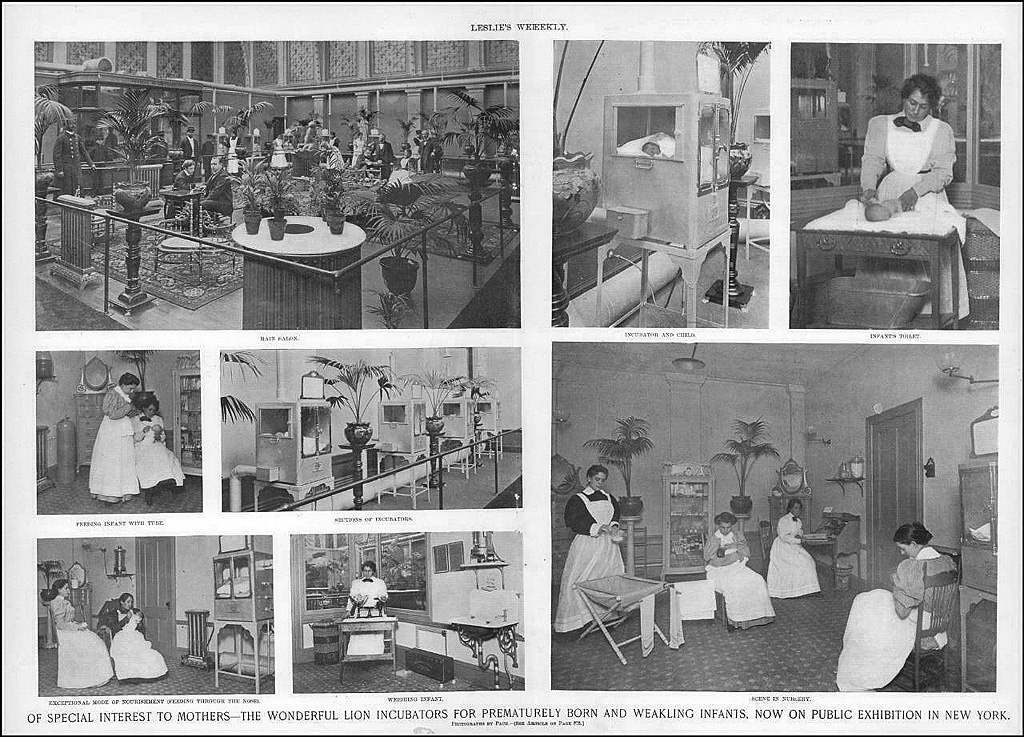
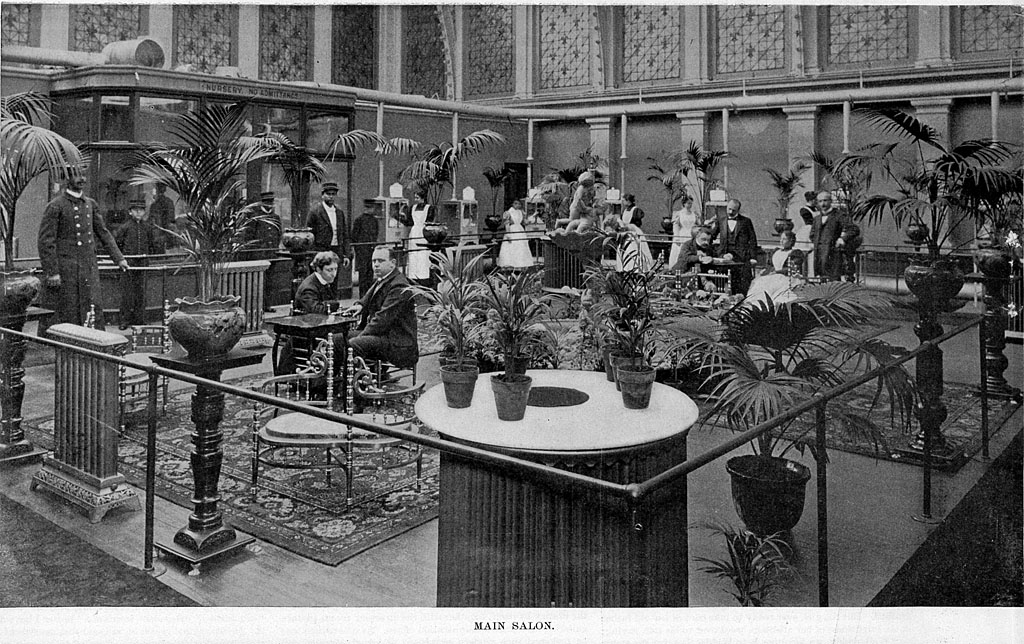
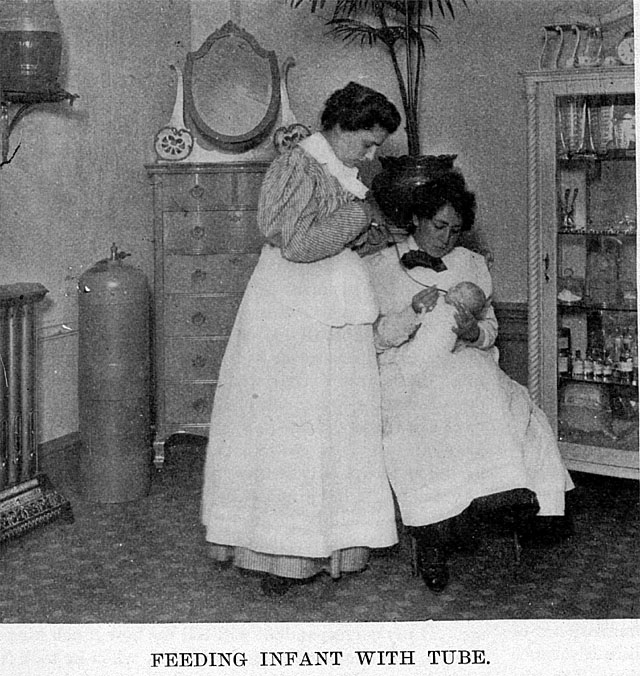
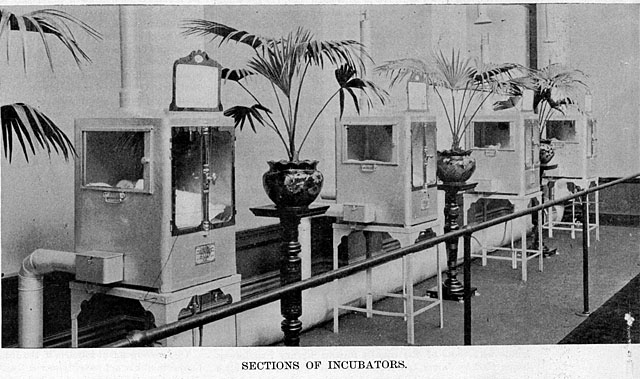
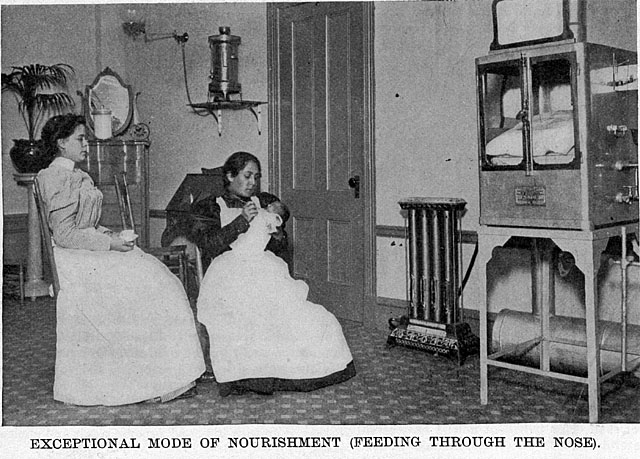
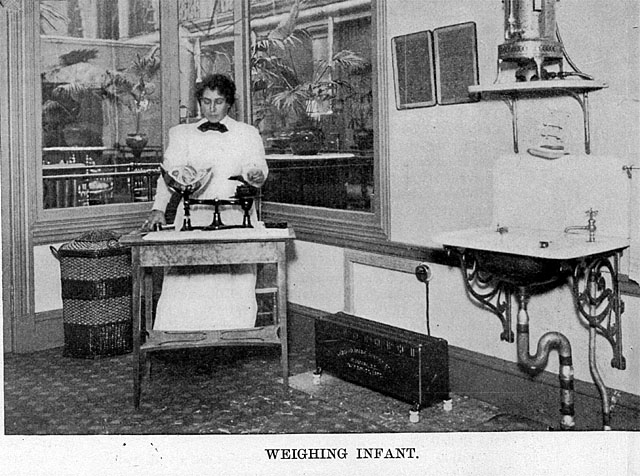
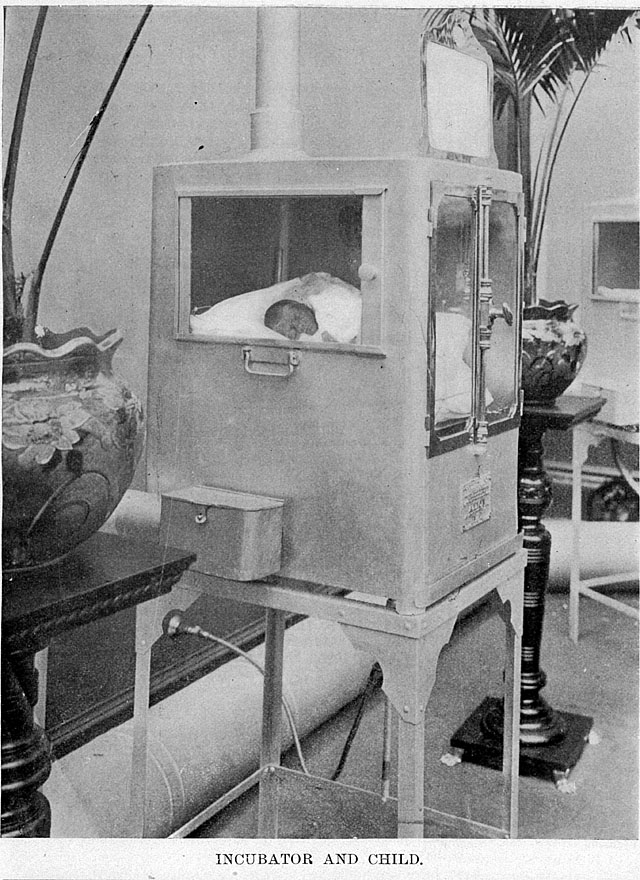
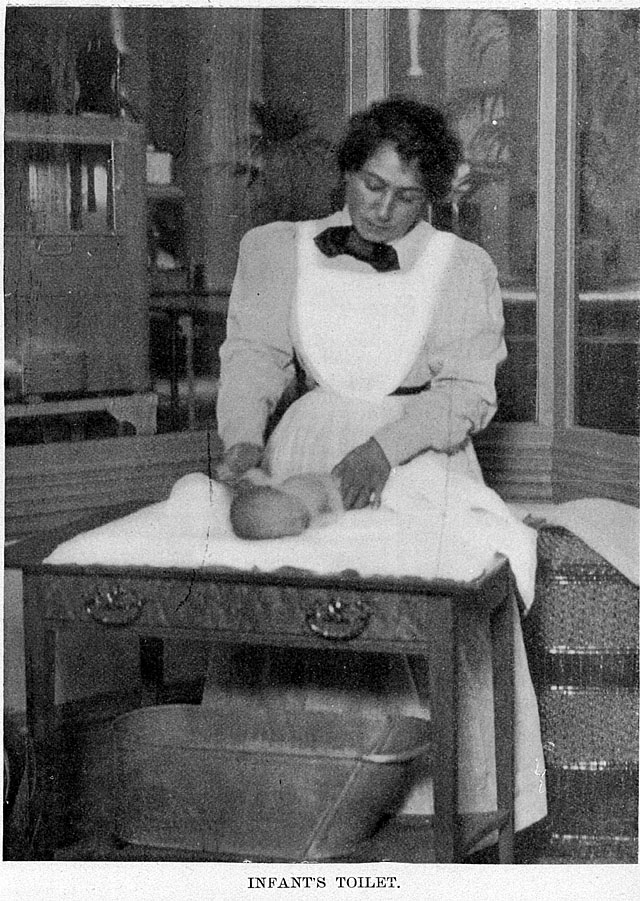
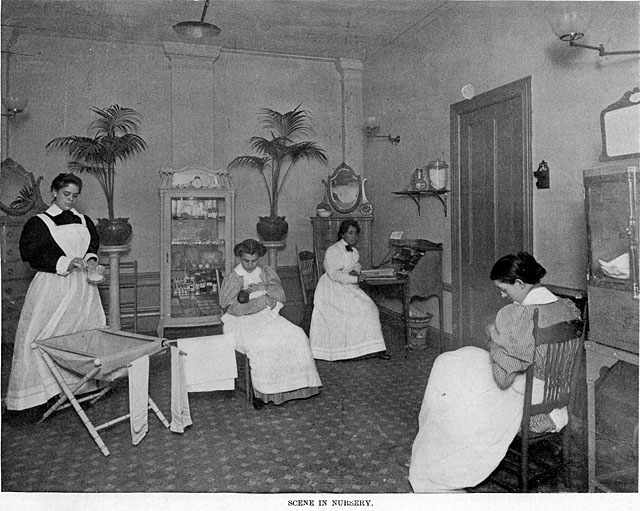
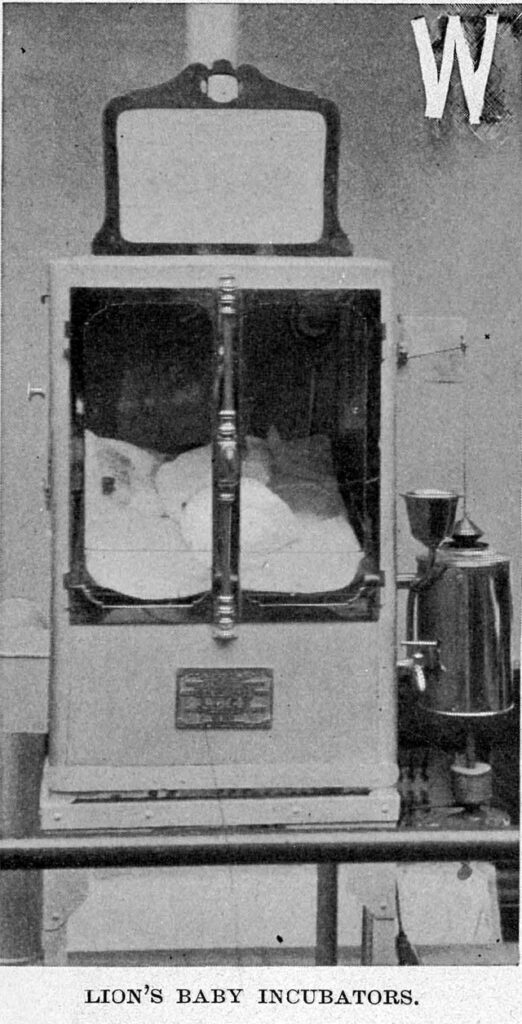
Last Updated on 03/24/24